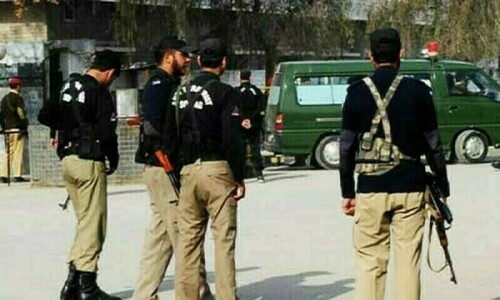
Imagine the task of predicting Pakistan Peoples Party’s (PPP) vote in the last elections just a day before late Benazir Bhutto on November 11, 2007, showed up outside the Chief Justice’s residence. That move alone brought many back to the PPP’s camp. Or what about having to adjust your forecasting models to account for the sympathy vote for PPP after Ms. Bhutto’s assassination in December 2007. The public opinion was swinging back and forth between the rivals and assassinations, bomb blasts, and solidarity with the incarcerated judges were instrumental in influencing voters.
Many independent observers have argued that the elections in 2008 were neither free nor fair. The Musharraf regime used the state’s machinery to try to put the King’s party, Pakistan Muslim League – Quaide Azam (PML-Q), in the lead. If it were not for the sympathy vote that landed in PPP’s lap after the tragic assassination of Benazir Bhutto, PML-Q could very well have emerged as victorious in the heavily manipulated elections.
Given the unique circumstances surrounding the 2008 elections, it may not be prudent to extrapolate from the 2008 election results to forecast the outcome of the May 2013 elections in Pakistan. Hence, instead of trying to forecast the election results in 2013, I would like to review the results of 2008 elections to see what can be learnt from the last elections.
The last elections were held in Pakistan on February 18, 2008. The voter turnout was recorded at 44 per cent. Given the highly politicised society, the voter turnout was indeed lower than expected. However, there could be several reasons for the low voter turnout. There has been no consensus in Pakistan about the legitimacy of the electoral rolls. The scrutiny by NADRA revealed that rolls were largely bogus in provinces like Balochistan. Hence, measures such as voter turnout are primarily meaningless for gauging enthusiasm about electoral democracy in Pakistan.
I present here an analysis of voting behaviour as was recorded in 2008’s elections. The analysis is based on results compiled from 268 federal constituencies out of a total of 272. The missing data are for constituencies where elections were not held, postponed, or the results were not declared or available for this analysis. A breakdown of party seats is presented in the table below.
PPP received 87 seats (32 per cent) in the National Assembly and received a total of 6 million votes for the winning candidates. The Nawaz League (PML-N) was second with 67 seats, and the King’s party (PML-Q) was third with 42 seats. The elections also returned 29 independents and 19 MQM candidates, along with other smaller groups.
Notice the subtle differences in the average number of votes for each seat secured in the National Assembly by various parties. PML-Q at 62,230 votes polled far fewer votes for each winning candidate than PPP and PML-N. Independents polled even less votes than the PML-Q. MQM, which is active in urban Sindh, had to win very large constituencies where average votes secured by MQM’s winning candidates were almost two-times more than the average.

While the above table presents the results for the winning candidates, it is equally important to see who else did the voters vote for in the last elections. A look at the votes polled for those who stood second, third, and fourth in the elections suggest that at least another 15.8 million votes were polled in the 2008 elections. The numbers presented in the table below are slightly different from the number of votes reported above because the number of votes polled used in the following table are for an earlier release of the elections 2008 data.
When we consider the total votes polled for each party, the PPP with over 10.4 million votes comes out in the lead. Interestingly, PML-N polled fewer votes than PML-Q even when PML-N got 25 seats more than PML-Q. The difference is because PML-Q polled 4.4 million votes for candidate who came in second. In fact, 67 per cent of the votes polled for PML-N were for the winning candidate compared for only 32 per cent of the same for PML-Q. Given that MQM is largely an urban Sindhi party and is active in only a small number of federal constituencies, 96 per cent of the votes polled for MQM were for the winning candidate.

Even if the PPP and PML-N were to maintain their vote banks in the next elections, the 7.8 million votes polled by PML-Q will still be up for grabs. It is highly unlikely for General Musharraf or the Chaudhry brothers from Gujrat to attract the 7.8 million voters to their camps. A more likely scenario is that the PML-Q voters may either return to PML-N or they may support Imran Khan’s Pakistan Tehreek-e-Insaaf (PTI).
Team Zardari must be hoping for a stronger than expected showing for PTI in the next elections. PPP will benefit from the scenario in which PTI attracts PML-Q voters. Otherwise, the prospect of the Muslim League’s voters consolidating under the Nawaz League’s banner may spell trouble for the PPP. Recall that over 14.4 million voted for the two Muslim Leagues in the last elections compared to only 10.4 million who voted for the PPP.

The views expressed by this blogger and in the following comments do not necessarily reflect the views and policies of the Dawn Media Group.











































